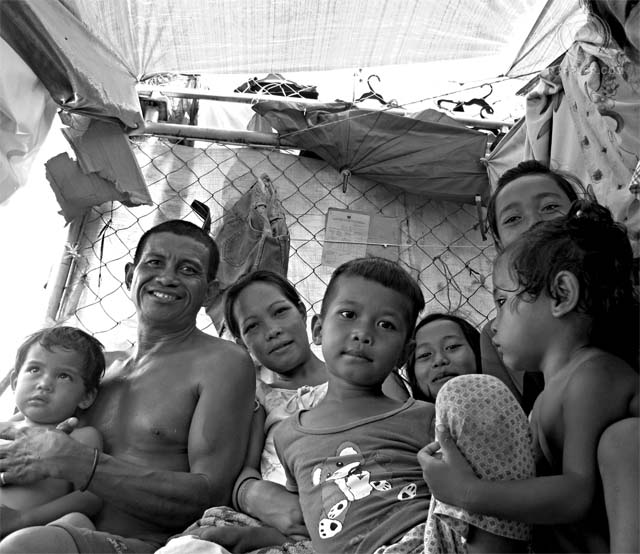SUMMARY
This is AI generated summarization, which may have errors. For context, always refer to the full article.

ZAMBOANGA CITY, Philippines – She does not know who is fighting the war. She heard there were rebels, and soldiers, but she is not certain who fired the first shot, only that she heard it at 3 in the morning while she slept inside her house in Salaam Drive in the town of Sta. Barbara.
She had seen them earlier, men in camouflage, 50 of them, walking past her house. When the sound of gunfire exploded from the mosque nearby, she jumped, grabbed her 4 children from their mats, the smallest of them still wet with urine. She ran, she and her husband and her 4 children barefoot on the road out of Sta. Barbara. There was no time to bring clothes or food.
They walked, for 7 hours, through shortcuts across fields, a clutch of refugees from two towns. She was 9 months pregnant, a baby in her arms. The gunfire blazed behind her, closer when they slowed to rest. It was only after they crowded into a temporary evacuation center that they could stop to breathe. They ate finally at 3 in the afternoon, 11 hours after she first heard the sound of guns.
Now she sits in a tent at the center of the Enriquez Sports Complex, a heavily pregnant 27-year-old woman resting against a tarp wall. Her name is Sheila Arnado. Her husband is a porter in a pier that is now closed. They are poor, have always been poor. Her children pile around her, slick with sweat, clutching at her skirts.
The Department of Social Welfare and Development puts the number of evacuees here at 82, 795 as of September 23 (9, 917 from Sta. Barbara; 17, 397 from Sta. Catalina; 13, 981 from Rio Hondo; 10,169 from Mampang; 7, 963 from Mariki; 7, 404 from Talon-Talon).
From above, the tents follow orderly blue and white lines. From the ground, each tent is an attempt at home. Rugs are laid out, bigger than the spaces allowed, rolled from living rooms of houses that no longer stand. Men and women crouch by the running tracks, washing clothes in blue buckets. Parents sit on the bleachers, fanning children with yellow identification cards. The soccer dugout is now a sandbox for toddlers, small girls run with kites cut from plastic bags, young boys drag makeshift toy cars on strings made of water bottles with caps for wheels.
Baby ‘evacuate’
There are lines everywhere—at the water pump, at the food tables, at the dozen or so portable toilets that line the back field. A fistfight breaks out. A grandmother picks nits from a sleeping girl’s head. The loudspeaker plays a Muslim prayer, before Gundam Style rips from the speakers.
It is not the life Sheila wants, even if they are not hungry here. She would like to eat without standing in line for 4 hours, to bathe when she is dirty and cook when a child is hungry. The rain at night soaks the babies, she and her husband take turns sweeping the water out from the tent.
They are told they can return home maybe in December. She strokes her belly and shakes her head. December is too far away. She wants to go home, but there is no house to go return to. The towns of Sta. Catalina and Sta. Barbara have been razed to the ground. She talks about a group of 8 that left the evacuation center to go home. They are all dead now, she says.
Today, she is told she may give birth. She has no name yet. Perhaps she will call her “evacuate.”
Someday, she says, when the child in her belly is grown, she will tell this story. About gunfire in the night, about a race in the dark, about hours of fear and months in a field living with thousands of the lost.
She hopes it will just be a story, with an ending that will be told in the kitchen of a house she can call her own along Salaam Drive in the town of Sta. Barbara. – Rappler
Video directed and edited by Paolo Villaluna, written and produced by Patricia Evangelista, with cinematography by Raymund Amonoy. Research by Joseph Suarez.
Add a comment
How does this make you feel?
There are no comments yet. Add your comment to start the conversation.